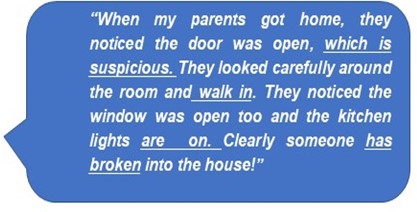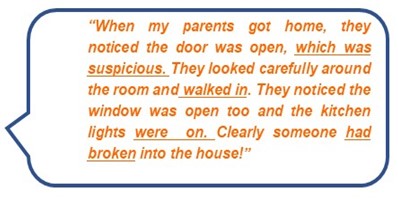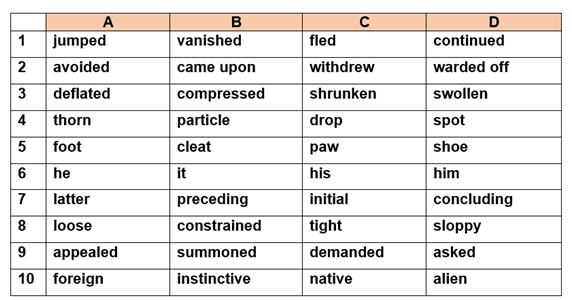I. ABOUT VERB TENSE ERRORS

Why do learners frequently make tense errors? There might be many reasons. Sometimes they make mistakes in English because they have never quite learned particular grammar rules, or because they get distracted , or because they're trying to express complicated ideas and, as a consequence, it becomes difficult to express those ideas clearly. These situations regularly lead to verb tense errors.
First things first
Let´s remember that a verb is a word that expresses an action, something that happens. Verb tense refers to the way a verb is formed to communicate when an action or occurrence takes place, in the present past or future, for example.
How many verb tenses are there?
The most relevant ones are nine. You are undoubtedly familiar with the simple forms of present, past and future tenses of verbs, as well as with the progressive (also known as continuous) forms of present past and future.
A verb in the simple and progressive present tense expresses an action happening habitually or right now. A past tense verb, in the simple and progressive forms, shows an action that happened or was happening in the immediate or distant past. A future tense verb, in the simple and progressive, expresses an action or occurrence that will happen any moment from now on. There are three additional tenses, referred to as perfect tenses, _present perfect, past perfect and future perfect. They allow us to communicate that an action has just recently happened or continues to happen.
Let´s be more specific
The present perfect tense verb, for example, shows that an action has just taken place or is continuing to happen. We form the present perfect tense of a verb by combining the present tense form of the verb “to have” with the past participle of the verb in question. Note that a past participle is a form of a verb that usually ends with -ed or -d (worked-lived). Some irregular verbs don't follow the typical pattern that most verbs do. Irregular verbs have past participles that end with -t, -en, -n or -ne.(built-eaten-given-done)
Here are some examples of the simple tenses in present, past and future: My brother studies, he studied, he will study.
Other examples of the progressive tenses in present, past and future are: My brother is studying, he was studying when his girlfriend arrived, he will be studying in Canada next week.
An example of a sentence containing a verb in the present perfect tense would be, “My brother has studied hard lately.” In the sentence, “My brother has lived in Canada for three years,” illustrates how the present perfect tense can be used to show that an action is continuing to happen.
The past perfect tense shows that an action took place before another action happened in the past. We form the past perfect tense of a verb by combining the past tense form of the verb “to have” with the past participle of the verb in question. Here's an example: “We had finished our homework when our parents arrived home,” shows how the past perfect tense can be used to show that one action had already happened before another action in the past took place.

Lastly, the future perfect tense shows that an action will have taken place by a certain time or before another future event. We form the future perfect tense of a verb by combining the future tense of the verb “to have” with the past participle of the verb in question. Here's an example: “I will have finished my college studies by the time my father retires.” Now, the sentence “I will have graduated from college by next August,” demonstrates how the future perfect tense can be used to show that one action will have already happened by a certain point in the future.
As a conclusion, you may have now become aware of the fact that there are nine main verb tenses:
- present simple, present progressive and present perfect.
- Past simple, past progressive and past perfect.
- Future simple, future progressive and future perfect.
How Can We Avoid Common Verb Tense Errors?
We have briefly reviewed nine verb tenses. Now, here are three tips that you need to know about verb tense errors and how to spot and avoid them.
1. Use verb tense consistency. That is, maintain the same verb tense within a clause, sentence, or paragraph. It helps to set the timeline, create a logical flow, and add clarity. For instance, supposing you were telling a story that happened in the past, then you'd probably be using the past tense. It's fundamental not to slip into the present tense - or any other tense - here and there, even if you want to give the sense of immediacy to what you're talking about. Note that while it's technically correct to tell or write a story or an anecdote using the present tense, however, the key rule will still apply: keep your verb tense consistent. Don't ever switch back and forth between the past and present tense. Here´s an example.

If you take a look at the verb tenses, you will notice a mixture of verbs in the past and present. You can solve the problem by using all verbs in the present or else, all the verbs in the past tense. Here´s the suggested version:


2. However, tense consistency is not always necessary. Sometimes an inconsistency in tense makes more sense than consistency, like when showing cause and effect over time, or when a secondary action requires a new clause. Use your best judgment for tense consistency in your own speaking and writing. Use the verb tense that creates the clearest and most logical sentences. For example:
- “We´re eating the sandwiches that Mom made for us this morning.”
- “I´ll show you the pictures that my father sent me yesterday.”
3. To improve your tense consistency, underline all of the verbs in your paragraph, make a note of the tense of each verb, and then organize and tweak the verbs to keep the tense consistent.
II. CONSOLIDATION.
TRY THE FOLLOWING QUIZ TO TEST YOUR KNOWLEDGE OF COMMON VERB TENSE ERRORS. Choose the correct answer to complete the sentences correctly.
III. EXERCISE I
Choose a or b to complete the following sentences correctly.
IV. READING TEXT.
Read the text below and decide which answer (A,B,C or D) best fits each gap. Use higher case letters


V. BIBLIOGRAPHY
Cambridge University Press. (2015). Cambridge Advanced Learner’s Dictionary. Fourth Edition.
Eastwood, J. (2019). Oxford Practice Grammar. Intermediate. Oxford University Press.
Hewings, M. (2013) Advanced Grammar in Use with Answers: A Self-Study Reference and Practice Book for Advanced Learners of English. CUP
Murray, L. (2014) English Grammar. Cambridge University Press.
Swan, M & Walter, C. (2016). Oxford English Grammar Course. Intermediate. Oxford University Press.
VI. WEB RESOURCES
Images_Compra propia de licencias de banco de imágenes de Pixton y Pngtree, exentas de derechos de autor. https://www-es.pixton.com/ & https://es.pngtree.com/free-backgrounds.
Reading Text retrieved and adapted from https://www.gutenberg.org/ebooks/28_ The Fables of Aesop by Aesop. No permission is needed to credit Project Gutenberg as the source of something one uses. This applies even for commercial use.
VII. CREDITS
- All practice exercises and charts were written by Connie Reyes Cruz_2022_ENES- LEÓN-UNAM
- Audio version performed by Kimberly, John; Isabella and Matt_Compra propia de licencia de uso de voces en Voicemaker, exenta de derechos de autor. https://voicemaker.in/ _Connie Reyes Cruz_2022_